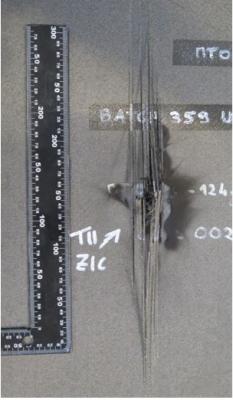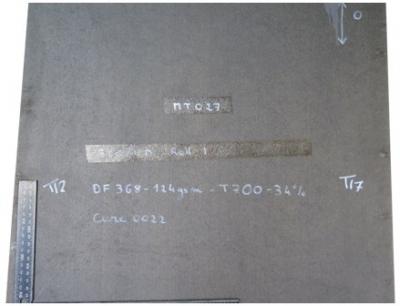 The following is a sponsored post by Haydale
The following is a sponsored post by Haydale
Haydale Composite Solutions are pleased to announce the production of graphene-enhanced electrically-conductive carbon fibre-reinforced composite materials with improved resistance to damage from a severe lightning-strike event.
Carbon fibre-reinforced composite materials, as used in many aerospace structures and components, are vulnerable to damage from lightning strikes. However, the addition of functionalised nano materials to the epoxy resin through the use of Haydale’s patented plasma functionalisation process, HDPlas, has been demonstrated to significantly improve the electrical conductivity of the epoxy resin which allows the laminate to dissipate the energy of the lightning strike throughout the structure thereby reducing the localised heating which causes damage in a lightning-strike event. Importantly, these improvements have been achieved without any major issues with existing manufacturing processes.
The mechanical properties of the modified material have been evaluated and it has been shown that the properties are maintained or improved by the addition of specific nano particulates. Particular attention has been paid to the matrix-dominated properties such as in-plane and inter-laminar shear. Improvements of 16% - 20% have been recorded in the measured modulus whilst maintaining the strength of the material.
A comparison has been made between modified and unmodified panels subjected to direct lightning-strike events and it has been demonstrated that severe back-face damage and punch-through can be eliminated through the use of these additives as can be seen in the following images.
 Back face of unmodified panel after lightning strike showing punch-through
Back face of unmodified panel after lightning strike showing punch-through
 Back face of Haydale-modified panels after lightning strike showing no visible damage
Back face of Haydale-modified panels after lightning strike showing no visible damage
This work has been conducted as part of the NATEP-supported GraCELS Project, a collaborative research project involving Haydale Composite Solutions, Airbus UK, BAE Systems, Cobham Technical Services and SHD Composites.
The HDPlas graphene-modified material has been used to manufacture an aileron inspired by a design from Airbus for their Eco-Flyer aircraft. The aileron is nearly 4 m in length and uses a novel design and manufacturing approach.
The aileron was designed and preliminary sized by Airbus and optimized by Stanford University Composites Design Team. Professors Steve Tsai and Sung Kyu Ha (Hanyang University) have optimized the original Airbus design and achieved a significant weight reduction, based on the latest Trace Scaling theory published recently. Also, the CFRP used in the aileron manufacture is shallow-angled, thin ply construction, called C-PLY, supplied by Chomarat and features other composite-specific design aspects that have been advocated by Professor Tsai, for many years..
In addition to the GraCELS consortium members, the demonstrator aileron could not have happened without the outstanding contribution of the Stanford University Team, Chomarat and DIATEX, from where the most crucial knowledge and materials, for the success of the project, were sourced.
Commenting on the development, Gerry Boyce, Managing Director of Haydale Composite Solutions said:
The development of a composite material with significantly improved lightning-strike performance while maintaining or even improving the mechanical performance will allow aircraft manufacturers to produce vulnerable parts that are lighter and cheaper to produce than current methods allow without compromising flight safety. This project has shown that this is feasible with careful materials selection, surface modification and mixing know how from Haydale. The project partners are now looking to take this technology forward to achieve even better performance than we have achieved so far.
HCS believe that the electrically-conductive carbon fibre prepregs created in the GraCELS project will also be suitable for applications where metallised coatings or meshes are currently incorporated into CFRP such as electronic enclosures requiring EMC or RF shielding; masts and large turbine blades in the renewables energy sector and in applications where static discharge may be a critical factor in materials selection amongst others.
The aileron can be seen on Haydale’s stand number M13 in Hall 5a at JEC World 2017 from March 14 - 16. Haydale Composite Solutions staff will be available to discuss this new technology and explain how it can be applied across a range of products.
For more information please contact:
Haydale Graphene Industries plc
Tel: +44 (0) 1269 842 946
Ray Gibbs, Chief Executive Officer
Trevor Phillips, Head of Communications
Haydale Composite Solutions Limited
Tel: +44 (0)1509 210 027
Gerry Boyce
Ebby Shahidi